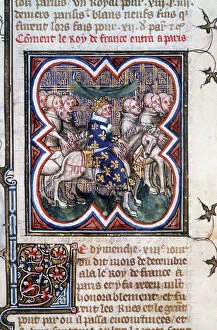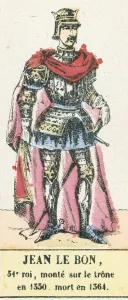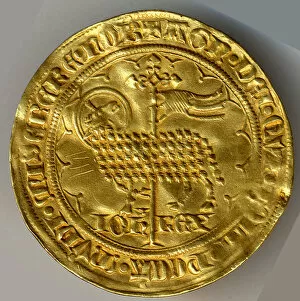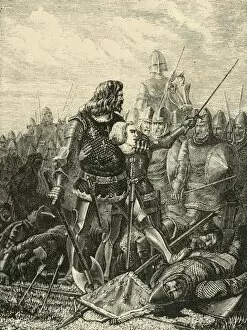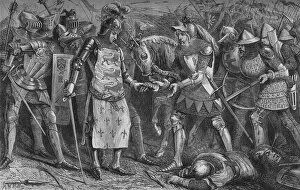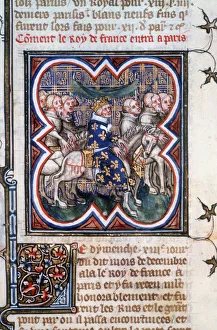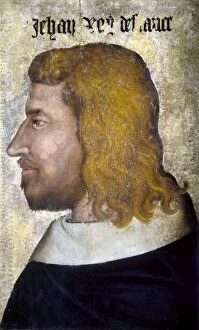Jean Le Bon Collection
"Jean le Bon: The Courageous King Who Faced Adversity" Step back in time and discover the remarkable story of Jean le Bon, also known as King John II, called the Good
All Professionally Made to Order for Quick Shipping
"Jean le Bon: The Courageous King Who Faced Adversity" Step back in time and discover the remarkable story of Jean le Bon, also known as King John II, called the Good. From his ascension to the throne in 1350 until his untimely death in 1364, this influential ruler left an indelible mark on French history. Through vibrant chromolithographs and coloured engravings, we catch a glimpse of Jean le Bon's reign. In one captivating image titled "Jean le Bon (chromolitho), " we witness the regal presence of the 51st king of France. His noble stature exudes power and authority. However, not all was glory for Jean le Bon. Another poignant artwork titled "Ms 659 f. 267 r. John II the Good taken prisoner by the English at the Battle of Poitiers" depicts a pivotal moment when he fell into enemy hands during battle. This event forever changed his life and shaped his legacy. Despite adversity, Jean le Bon displayed resilience and strength throughout his captivity under Edward the Black Prince as portrayed in "Edward the Black Prince waiting on John King of France his Prisoner. " Even while imprisoned, he maintained dignity and composure. The loyalty between monarchs is showcased in "The Prince serves King John at table, " where James William Edmund Doyle captures a touching scene from their time together during captivity. It highlights both camaraderie and respect amidst challenging circumstances. Finally, historical illustrations such as "Surrender of the King of France at Poitiers" or "John II of France surrendering his sword to Denis de Morbeck at the Battle of Poitiers" remind us that even great leaders face defeat but can still leave lasting legacies through their actions. Intriguingly mysterious is an artwork entitled "Mouton of Jean The Good, " which leaves us pondering its significance within this narrative.

